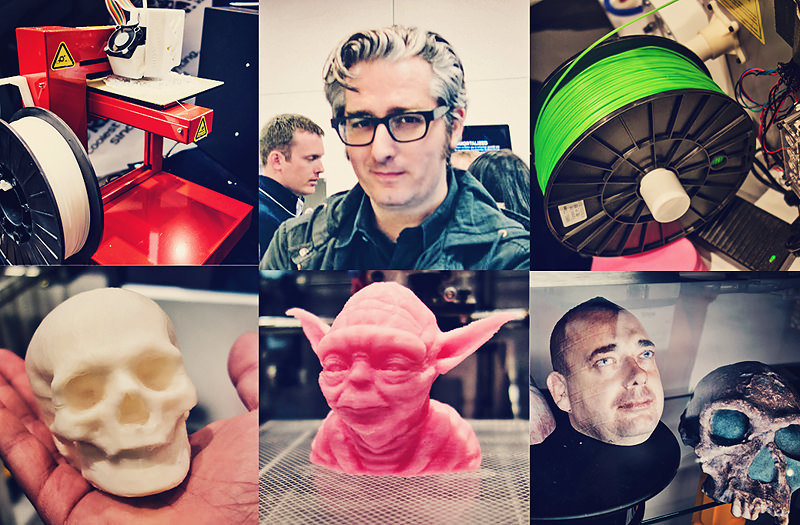3D Printers Get Cheaper, Better, Faster

No one seems to know what to do with a 3D printer, not even the people selling 3D printers. But that might not matter.
It turns out making a 3D printer isn’t that hard. A typical ink printer has most of the technology needed, and in some ways printing with plastic is actually easier. Thanks to projects like RepRap the software to turn a 3D drawing into a printed part is largely open source. And so the price of 3D printers has been falling precipitously while the quality soars.
A little over a year ago MakerBot announced the Replicator. It was a laser cut plywood contraption for around $1700, but it was the first personal printer to capture the public’s imagination. The parts it printed were composed of layers of plastic 200 microns thick.
A year later the market is flooded with personal printers. There are half a dozen alternatives on display here at the Inside 3D Printing conference. The typical printer here has twice the resolution of the original Replicator (with layers 100 microns thick) and you can buy one for less than $500. The Form 1 prints even finer details, with layers indistinguishable to the eye. And MakerBot’s New York retail store is lined with Replicator 2’s. With a beautiful powder coated steel enclosure it looks and feels like a consumer product.
Watching people’s faces here at the conference, or talking to random people about 3D printing, there’s a common reaction — awe. 3D printing seems like magic. People don’t know what they’ll do with it, but they want 3D printing.
Ask yourself at what price you’d buy a 3D printer. If the current trends hold you’ll be able to buy one for 200 bucks some time in the next year or two. The “killer app” for consumer 3D printing may still be a mystery, but if the price keeps dropping and the quality keeps rising it won’t be long before a lot of people buy them and put them to good use.
![3D Printers Get Cheaper, Better, Faster [Hack Things]](https://sloppy-joe-app.imgix.net/www/hackthings-logo.png)